
Inflation tracker: latest figures as countries grapple with rising prices
 © Bloomberg
© BloombergWe’ll send you a myFT Daily Digest email rounding up the latest Global inflation news every morning.
The world’s leading central banks are expected to start tightening monetary policy in the coming months as inflation in many countries hits its highest level for many years, increasing households’ cost of living. House prices have also soared.
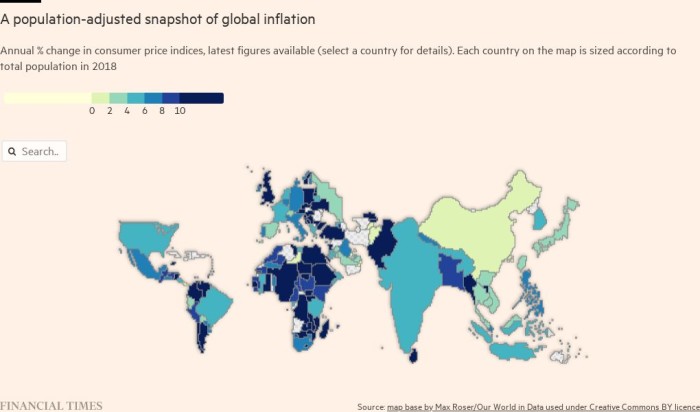
Some economists fear a general return to the chronic inflation of the 1970s. Over the past year, East Asia has largely been an exception to the worldwide pattern — but even here, prices have started to accelerate.
This page provides a regularly updated visual narrative of consumer price inflation around the world, including economists’ expectations for the future. It separates inflation into its main components, and shows what higher food prices mean for consumers and where investors think inflation is heading over the medium term. It also tracks house prices.
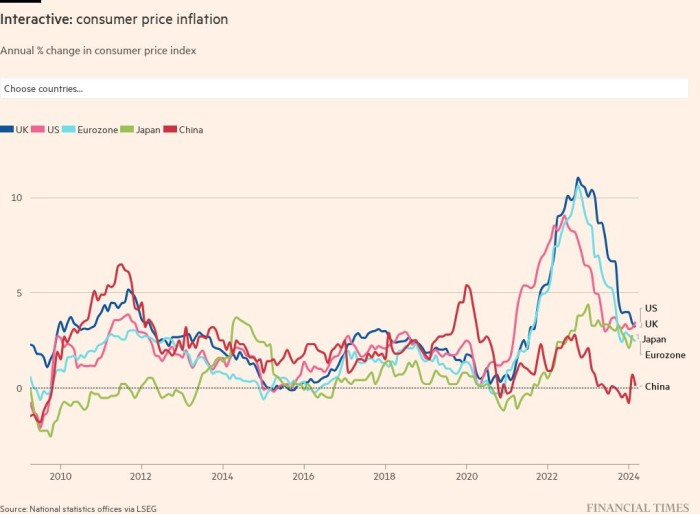
One of the points of debate among policymakers and economists is whether the rise in consumer prices is transitory and will fade soon, or whether it may prove more permanent.
Yet even among those who believe that inflation will fall next year, there is an acceptance that the inflationary shock will last longer than first estimated. Economists polled by Consensus Economics, a company that collates the predictions of leading forecasters, have steadily revised up their expected inflation figures for 2022.
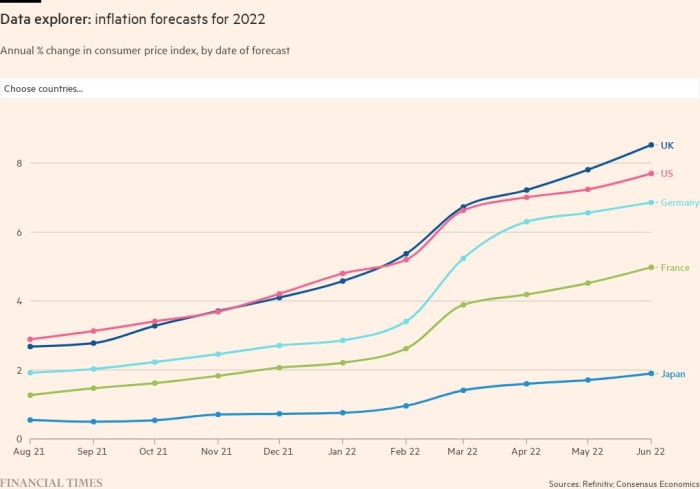
Another point of concern is asset prices, especially houses. These have soared in many countries during the pandemic, boosted by ultra loose monetary policy, homeworkers’ desire for more space and government income-support schemes.
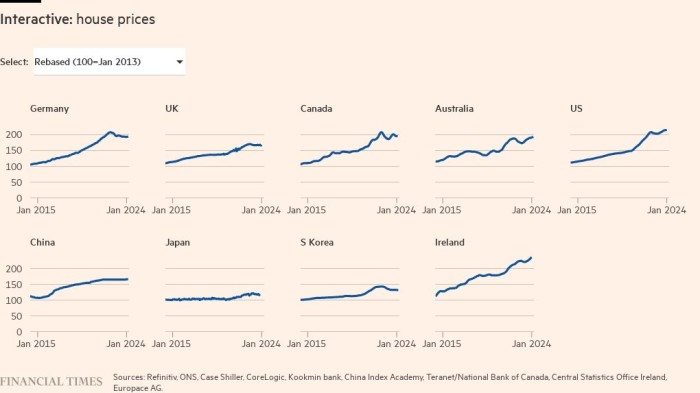
Rising consumer price inflation is a challenge for central banks, not least those G7 countries that have a price stability target of 2 per cent. To reach that goal, central banks can adjust monetary policy to curb demand. But such tools are less effective in tackling inflation created by supply shortages. As the governor of the Bank of England, Andrew Bailey, has said, monetary policy “doesn’t get more gas, more computer chips, more lorry drivers”.
The rise in energy prices, which has driven inflation in many countries, is a case in point. In one sign that inflation may be spreading beyond energy, the price of many other items is also increasing — especially in countries where consumer demand is strong enough for businesses to pass on higher costs.
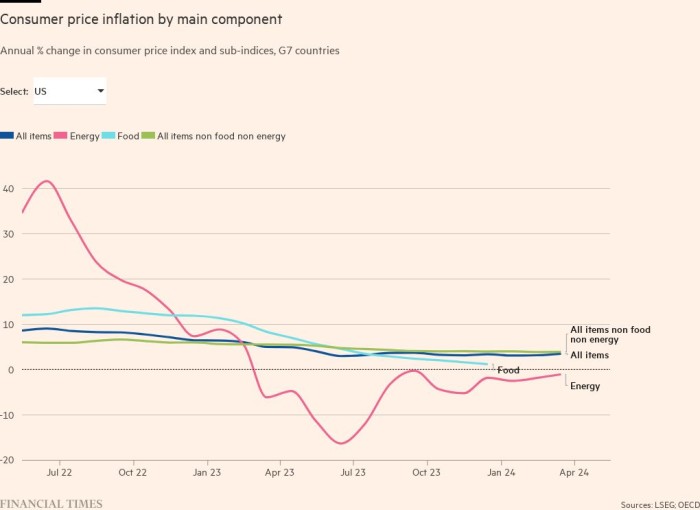
Rising prices limit what households can spend on goods and services. For the less well-off, that could lead to their being unable to afford basic needs, such as food and shelter.
Daily data on staple goods, such as the wholesale price of breakfast ingredients, provide an up-to-date indicator of the pressures faced by consumers. In developing countries, the wholesale cost of these ingredients has a larger impact on final food prices; food also accounts for a larger share of household spending.
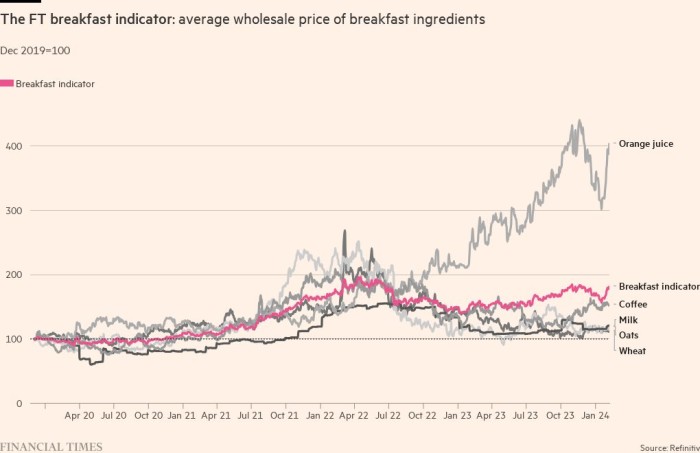
The debate over whether the surge in inflation is temporary or more permanent continues. Supporters of “team transitory” believe the price spikes are due to a one-off surge in consumer demand bumping against a one-off rise in supply chain disruptions. Supporters of “team permanent” point to a broadening pattern of price rises, especially in countries where a shortage of workers is pushing up wages.
Markets generally seem to have sided with “team permanent” and, in many countries, have steadily priced in a rise in inflation over the next five years.
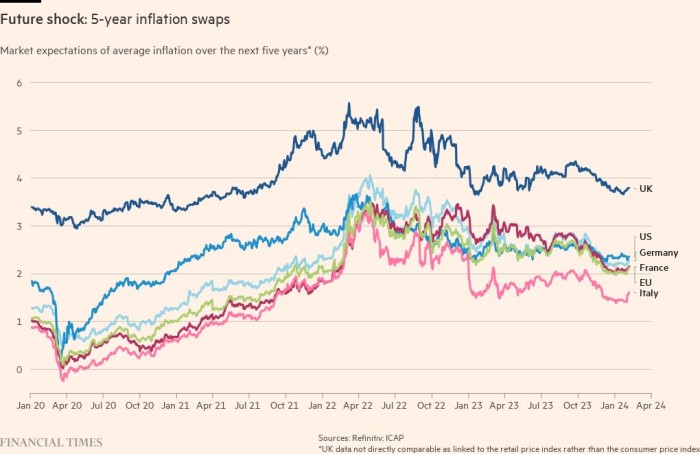 {"focus":["573cc1d3-b359-4548-a69a-4aa0b3818c1b","a39873a9-37fd-4501-b9e1-d98da1677e99","8a2cd02a-a97d-40be-b431-07ab2b26fe23","29e67a92-a3b8-410c-9139-15abe9b47e12","82645c31-4426-4ef5-99c9-9df6e0940c00","ec4ffdac-4f55-4b7a-b529-7d1e3e9f150c"],"authorConcepts":["0528eeb4-368e-4e89-9db6-14da3149b7f8","6b492278-5999-4e16-a926-934dde499d2d"],"displayConcept":"573cc1d3-b359-4548-a69a-4aa0b3818c1b"}
{"focus":["573cc1d3-b359-4548-a69a-4aa0b3818c1b","a39873a9-37fd-4501-b9e1-d98da1677e99","8a2cd02a-a97d-40be-b431-07ab2b26fe23","29e67a92-a3b8-410c-9139-15abe9b47e12","82645c31-4426-4ef5-99c9-9df6e0940c00","ec4ffdac-4f55-4b7a-b529-7d1e3e9f150c"],"authorConcepts":["0528eeb4-368e-4e89-9db6-14da3149b7f8","6b492278-5999-4e16-a926-934dde499d2d"],"displayConcept":"573cc1d3-b359-4548-a69a-4aa0b3818c1b"}Get alerts on Global inflation when a new story is published
Get alertsCopyright The Financial Times Limited 2022. All rights reserved.Reuse this content (opens in new window) CommentsJump to comments sectionPromoted Content- Global inflation Add to myFT
- Visual and data journalism Add to myFT
- Valentina Romei Add to myFT
- Alan Smith Add to myFT
Owl Media Group takes pride in providing social-first platforms which equally benefit and facilitate engagement between businesses and consumers and creating much-needed balance to make conducting business, easier, safer, faster and better. The vision behind every platform in the Owl Media suite is to make lives better and foster a healthy environment in which parties can conduct business efficiently. Facilitating free and fair business relationships is crucial for any thriving economy and Owl Media bridges the gap and open doors for transparent and successful transacting. No advertising funds influence the functionality of our media platforms because we value authenticity and never compromise on quality no matter how lucrative the offers from advertisers may seem.
Originally posted on: https://www.ft.com/content/088d3368-bb8b-4ff3-9df7-a7680d4d81b2